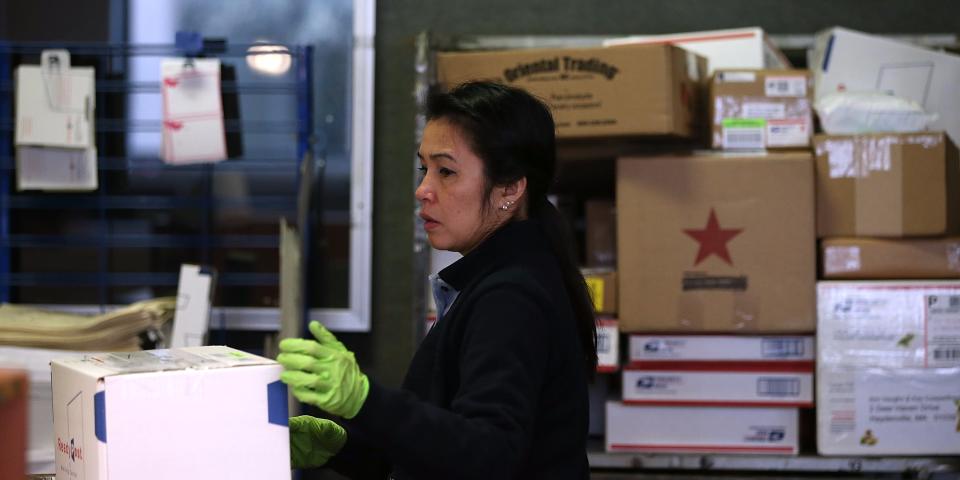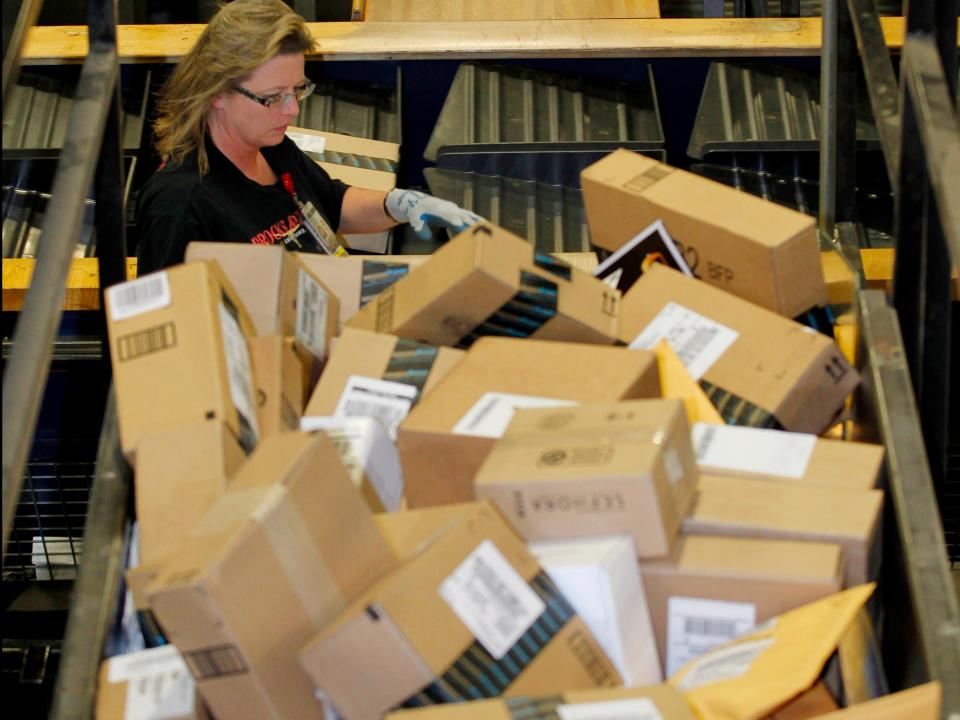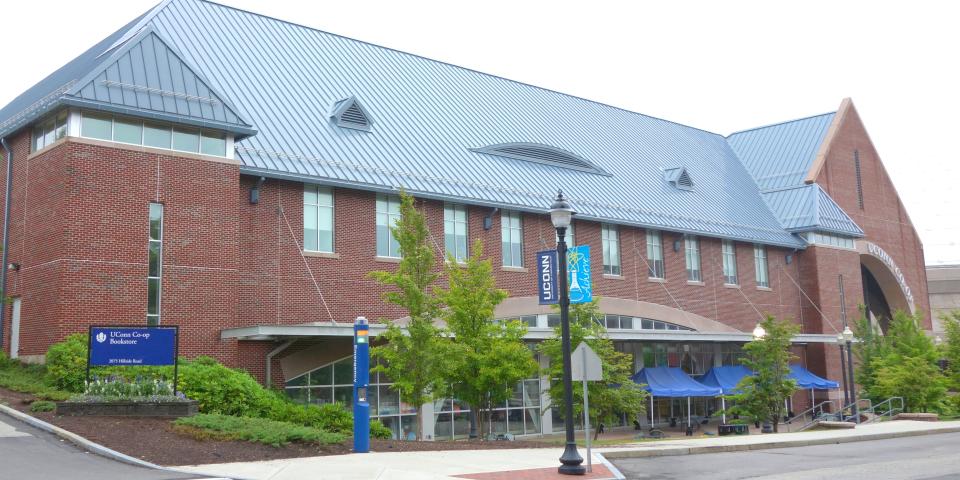Amazon Prime is wreaking havoc on college mailrooms
Amazon Prime is becoming a major headache for college mailrooms.
A report on Monday from the University of Connecticut's Daily Campus said the university was planning to make changes to its mailroom procedures in response to a flood of packages that have overwhelmed its staff.
The basic problem is that there's nowhere for the packages to go: The mailrooms, originally designed to deal with letters received by students living in dorms, are simply not big enough to handle the volume of packages being received.
A September 18 report from the Daily Campus said the Mansfield, Connecticut, post office — which is where packages headed to UConn are processed — had received 3,000 packages per day headed to campus. This volume of deliveries kept the staff at Mansfield's post office at work until 3 a.m.

(Justin Sullivan/Getty Images)
UConn's Storrs campus has around 31,000 students.
Monday's report also noted that UConn was discussing the creation of a central warehouse for packages, something the Daily Campus said had already been put in place at other universities.
At the heart of this problem seems to lie Amazon Prime, which offers free two-day shipping to customers for an annual fee. It is available to college students free for six months and at a discounted rate of $49 a year thereafter (Prime is $99 a year for nonstudents).
And what this report really illuminates, to our minds, is the logistical problem created when we all start using what appears to be seamless technology ... at the same time.
Recall that two years ago UPS was overwhelmed by the volume of packages being shipped during the holidays. This led to Christmas presents not arriving on time, forcing Amazon to offer $20 gift cards and ship refunds to affected customers.

(REUTERS/John Sommers II)
A UPS worker sorting package during the 2013 Holiday shipping rush.
Most recently, Amazon launched Amazon Flex, which employs part-time drivers to deliver things for Amazon's Prime Now service (the company's one-hour delivery service). And then of course there is talk of Amazon looking to build up a fleet of drones to deliver packages.
All of this is part of what delivery and logistics companies call the "final mile," or the leg that gets packages from central clearing locations like UPS warehouses or US post offices to your door.
New York University marketing professor Scott Galloway, for example, has said Amazon's desire to solve this problem should prompt the company to just buy the US Postal Service outright. (The USPS, for its part, is already delivering packages for Amazon on Sunday.)
And so when you think about a college campus, every student needs the same thing at (roughly) the same time: books.

(Wikimedia Commons)
The UConn bookstore, where you don't need to go to get your books.
Traditionally, a professor would put in an order to the bookstore over the summer or between semesters, and then students would rummage through overcrowded stores and stand in interminable lines just to pay for what felt like needlessly overpriced textbooks.
But now, students can simply order books on Amazon and — with a Prime membership — get them two days later. And some professors will make books available only at Amazon because they know the price difference between Amazon and the campus bookstore will lead to nobody buying the book on campus.
So instead of making the acquisition of a semester's textbooks an onerous and needlessly expensive task, Amazon has, in theory, made it something students don't even have to get out of bed to complete.
Things, of course, are never that simple, and now getting these cheaper, on-demand books has created a new headache for colleges and students.
No free lunches, and so on.
(Non-disclosure disclosure: I went to UConn, which is why I was reading the Daily Campus. You should also read the Daily Campus or the paper from your alma mater because college newspapers are great.)
NOW WATCH: Maybe working at Amazon is hard for a reason
More From Business Insider



